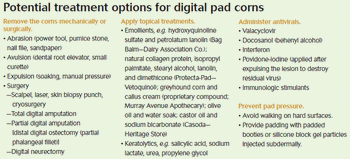
Canine atopic dermatitis is a common and frustrating skin disease. Here are three treatments compared and contrasted, including two standards and one relatively new kid on the block.

Canine atopic dermatitis is a common and frustrating skin disease. Here are three treatments compared and contrasted, including two standards and one relatively new kid on the block.

Use this resource to help you discover the underlying cause in those itchy dogs.

A new study shows hidden antigens lurking in flavored medications and supplements may derail a dietary elimination trial.

And how to do it right-including a comprehensive downloadable client history form.

Dr. Douglas DeBoer pinpoints the patient history clues that should set off red flags for this allergic disease.

What to do when your veterinary client exclaims, My cat has something wrong with his face!

This veterinary technique targets a larger area.

Clinical observations and diagnostic testing have to go hand in hand, says Dr. Sheila Torres.

A picture perfect way to keep track of gradual skin mass changes.

How to begin to distinguish between allergic dogs and other sources of rashes and itching.

Laird Goodman, DVM, CVA, offers suggestions on how to controlnot curedermatologic conditions in pets; plus, how to educate and set realistic expectations for your clients.

Gene Nesbitt, DVM, MS, DACVD, offers his expert tips on how to conduct a great dermatology visitand how the business benefits you can generate for your practice from dermatology visits.

Uncover the condition behind this dog's pendulous, delicate skin.

The lowdown on flea allergy dermatitis

Pets and owners alike suffer when an ear infection arises. Follow these tips from Dr. Cecilia Friberg, DACVD, to the get the whole household comfortable once again.

Use this handout to talk to veterinary clients about what otitis is and what they can do to help their pet.

A practical tip that doubles to recycle intravenous sets.

This golden retriever looks like a "poster child" for hypothyroidism, but you might be surprised at the skin issues she was actually diagnosed with-listen in as Stephen White, DVM, DACVD explains.

Stephen White, DVM, DACVD, discusses how the clinical presentation of pyoderma can sometimes mimic pemphigus foliaceous. Check out his visual examples, in both cats and dogs.

Listen as Stephen White, DVM, DACVD, reviews the diagnostic steps he takes when presented with a patient with signs of fungal skin disease.

Veterinary dermatologist Cecilia Friberg, DVM, DACVD, offers a few tips to make ear cleaning more tolerable for dogs-and an easier task for pet owners.

The goal of this study was to determine the efficacy of eight over-the-counter disinfectants at killing the dermatophytes Microsporum canid and Trichophyton mentagrophytes.

The goal of this study was to determine if Oclacitinib is a safe and effective alternative for the treatment of atopic dermatitis in dogs.

An overview of the clinical signs, potential causes, and treatment options available for corn-type lesions on canine paw pads.

Methicillin-resistant organisms are being recovered more and more frequently from canine skin cultures, and concerns about transmission are increasing.